|
Common name |
B-hUPAR MC38 | Catalog number | 311651 |
| Aliases | CD87; UPAR; URKR; U-PAR;PLAUR | Disease | Colon carcinoma |
|
Organism |
Mouse |
Strain | C57BL/6 |
| Tissue types | Colon | Tissue | Colon |
The mouse Upar gene was replaced by human UPAR coding sequence in B-hUPAR MC38 cells. Human UPAR is highly expressed on the surface of B-hUPAR MC38 cells.
Protein expression analysis
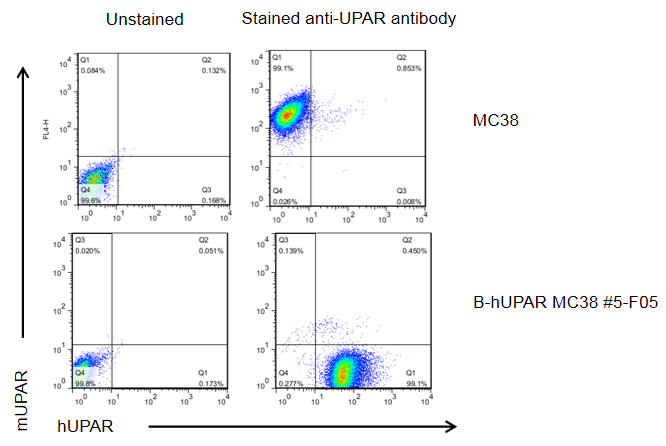
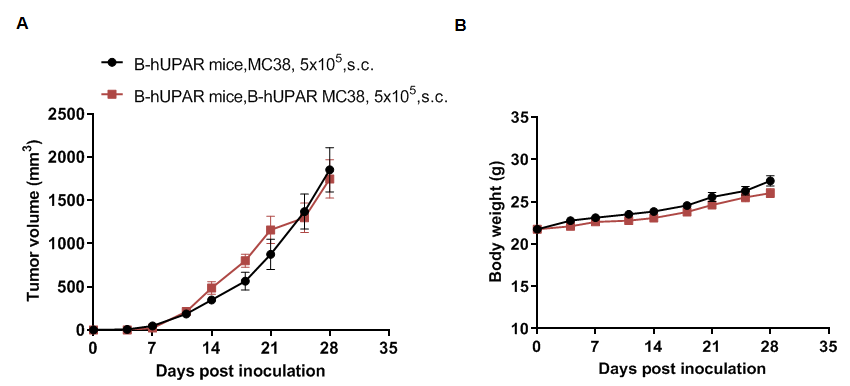
Subcutaneous homograft tumor growth of B-hUPAR MC38 cells. B-hUPAR MC38 cells (5x105) and wild-type MC38 cells (5x105) were subcutaneously implanted into B-hUPAR mice (male, 7-9-week-old, n=5). Tumor volume and body weight were measured twice a week. (A) Average tumor volume ± SEM. (B) Body weight (Mean± SEM). Volume was expressed in mm3 using the formula: V=0.5 X long diameter X short diameter2. As shown in panel A, B-hUPAR MC38 cells were able to establish tumors in vivo and can be used for efficacy studies.
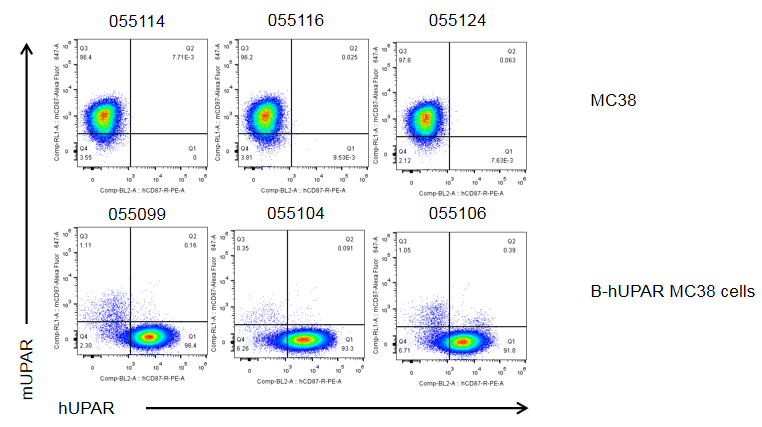
Tumor cells were harvested and assessed for human UPAR expression by flow cytometry. As shown, human UPAR was highly expressed on the surface of tumor cells. Therefore, B-hUPAR MC38 cells can be used for in vivo efficacy studies of novel UPAR therapeutics.
Tumor growth curve & Body weight changes
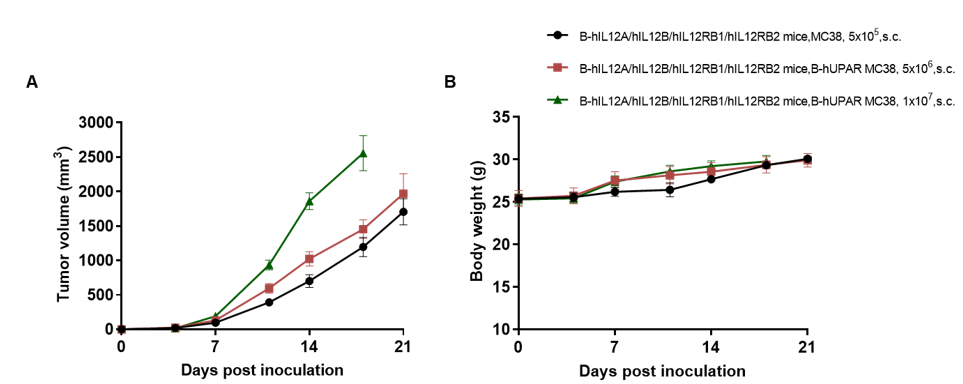
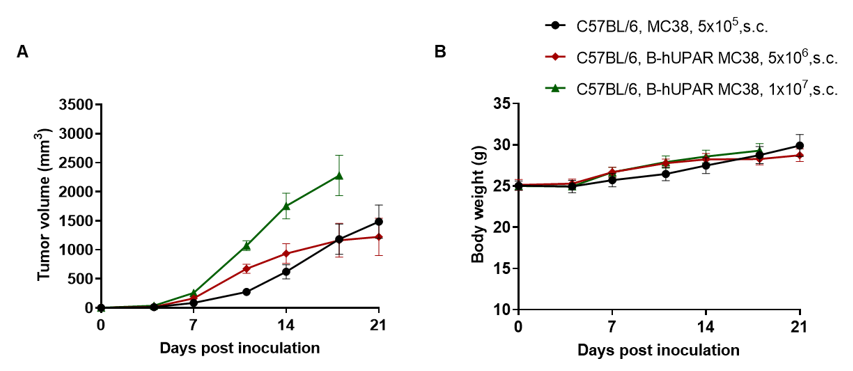
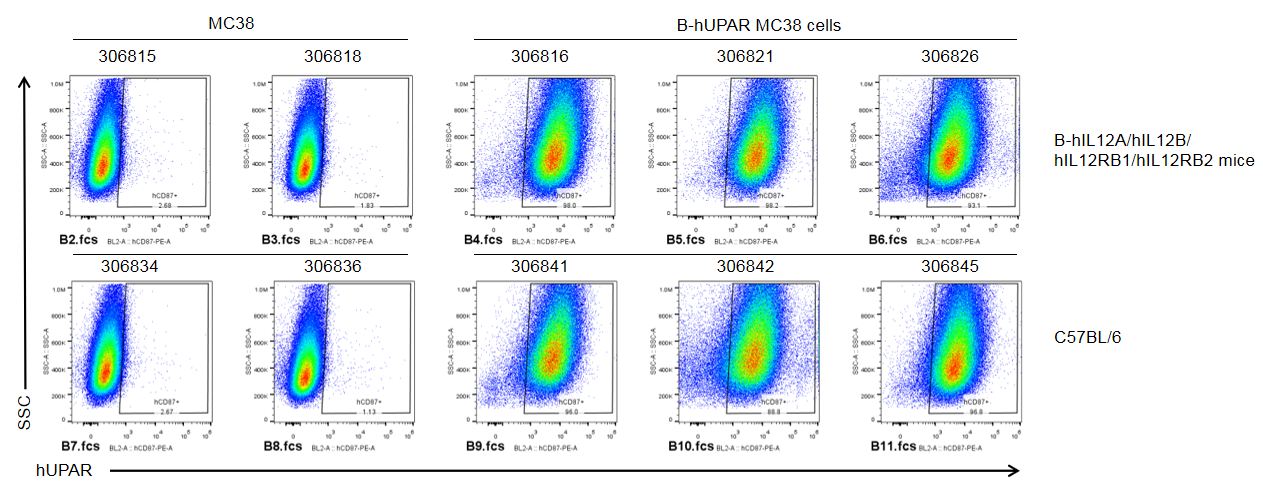
B-hUPAR MC38 cells were subcutaneously transplanted into B-hIL12A/hIL12B/hIL12RB1/hIL12RB2 mice and C57BL/6 (n=6), and on 25 days post inoculation, tumor cells were harvested and assessed for human UPAR expression by flow cytometry. As shown, human UPAR was highly expressed on the surface of tumor cells. Therefore, B-hUPAR MC38 cells can be used for in vivo efficacy studies of novel UPAR therapeutics.






 +86-10-56967680
+86-10-56967680 info@bbctg.com.cn
info@bbctg.com.cn